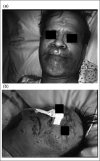Zinc and liver disease
- PMID: 22307488
- PMCID: PMC6027651
- DOI: 10.1177/0884533611433534
Zinc and liver disease
Erratum in
- Nutr Clin Pract. 2012 Apr;27(2):305. Mohommad, Mohammad K [corrected to Mohammad, Mohammad K]
Abstract
Zinc is an essential trace element required for normal cell growth, development, and differentiation. It is involved in DNA synthesis, RNA transcription, and cell division and activation. It is a critical component in many zinc protein/enzymes, including critical zinc transcription factors. Zinc deficiency/altered metabolism is observed in many types of liver disease, including alcoholic liver disease (ALD) and viral liver disease. Some of the mechanisms for zinc deficiency/altered metabolism include decreased dietary intake, increased urinary excretion, activation of certain zinc transporters, and induction of hepatic metallothionein. Zinc deficiency may manifest itself in many ways in liver disease, including skin lesions, poor wound healing/liver regeneration, altered mental status, or altered immune function. Zinc supplementation has been documented to block/attenuate experimental ALD through multiple processes, including stabilization of gut-barrier function, decreasing endotoxemia, decreasing proinflammatory cytokine production, decreasing oxidative stress, and attenuating apoptotic hepatocyte death. Clinical trials in human liver disease are limited in size and quality, but it is clear that zinc supplementation reverses clinical signs of zinc deficiency in patients with liver disease. Some studies suggest improvement in liver function in both ALD and hepatitis C following zinc supplementation, and 1 study suggested improved fibrosis markers in hepatitis C patients. The dose of zinc used for treatment of liver disease is usually 50 mg of elemental zinc taken with a meal to decrease the potential side effect of nausea.
Figures




Similar articles
-
Zinc and human health: an update.Arch Toxicol. 2012 Apr;86(4):521-34. doi: 10.1007/s00204-011-0775-1. Epub 2011 Nov 10. Arch Toxicol. 2012. PMID: 22071549 Review.
-
Discovery of human zinc deficiency: its impact on human health and disease.Adv Nutr. 2013 Mar 1;4(2):176-90. doi: 10.3945/an.112.003210. Adv Nutr. 2013. PMID: 23493534 Free PMC article. Review.
-
Zinc as a multipurpose trace element.Arch Toxicol. 2012 Apr;86(4):519-20. doi: 10.1007/s00204-012-0843-1. Arch Toxicol. 2012. PMID: 22415766 No abstract available.
-
Current Trends of Essential Trace Elements in Patients with Chronic Liver Diseases.Nutrients. 2020 Jul 14;12(7):2084. doi: 10.3390/nu12072084. Nutrients. 2020. PMID: 32674425 Free PMC article. Review.
-
Clinical manifestations of zinc deficiency.Annu Rev Nutr. 1985;5:341-63. doi: 10.1146/annurev.nu.05.070185.002013. Annu Rev Nutr. 1985. PMID: 3896271 Review.
Cited by
-
Serum zinc level in liver cirrhosis with hepatic encephalopathy and its correlation with different stages of hepatic encephalopathy.J Family Med Prim Care. 2024 Sep;13(9):3979-3987. doi: 10.4103/jfmpc.jfmpc_537_24. Epub 2024 Sep 11. J Family Med Prim Care. 2024. PMID: 39464910 Free PMC article.
-
Effect of zinc supplementation on viral response in patients with chronic hepatitis C and Beta thalassemia major, a pilot study.J Clin Diagn Res. 2014 Dec;8(12):HC16-9. doi: 10.7860/JCDR/2014/10403.5305. Epub 2014 Dec 5. J Clin Diagn Res. 2014. PMID: 25653968 Free PMC article.
-
Mechanism of Zinc Transport through the Zinc Transporter YiiP.J Chem Theory Comput. 2022 Apr 12;18(4):2556-2568. doi: 10.1021/acs.jctc.1c00927. Epub 2022 Feb 28. J Chem Theory Comput. 2022. PMID: 35226479 Free PMC article.
-
A narrative review of nutritional abnormalities, complications, and optimization in the cirrhotic patient.Transl Gastroenterol Hepatol. 2022 Jan 25;7:5. doi: 10.21037/tgh-20-325. eCollection 2022. Transl Gastroenterol Hepatol. 2022. PMID: 35243114 Free PMC article. Review.
-
Dietary zinc is a key environmental modifier in the progression of IgA nephropathy.PLoS One. 2014 Feb 28;9(2):e90558. doi: 10.1371/journal.pone.0090558. eCollection 2014. PLoS One. 2014. PMID: 24587392 Free PMC article.
References
-
- Vallee BL, Wacker WEC, Bartholomay AF, Robin ED. Zinc metabolism in hepatic dysfunction, I: serum zinc concentrations in Laennec’s cirrhosis and their validation by sequential analysis. N Engl J Med. 1956;255:403–408. - PubMed
-
- Vallee BL, Wacker WEC, Batholomay AF, Hoch FL. Zinc metabolism in hepatic dysfunction, II: correlation of metabolic patterns with biochemical findings. N Engl J Med. 1956;257:1056–1065. - PubMed
-
- Kahn AM, Helwig HL, Redeker AG, Reynolds TB. Urine and serum zinc abnormalities in disease of the liver. Am J Clin Pathol. 1965;44:426–435. - PubMed
-
- Sullivan JF, Heaney RP. Zinc metabolism in alcoholic liver disease. Am J Clin Nutr. 1970;23:170–177. - PubMed
Publication types
MeSH terms
Substances
Grants and funding
LinkOut - more resources
Full Text Sources
Other Literature Sources
Medical

